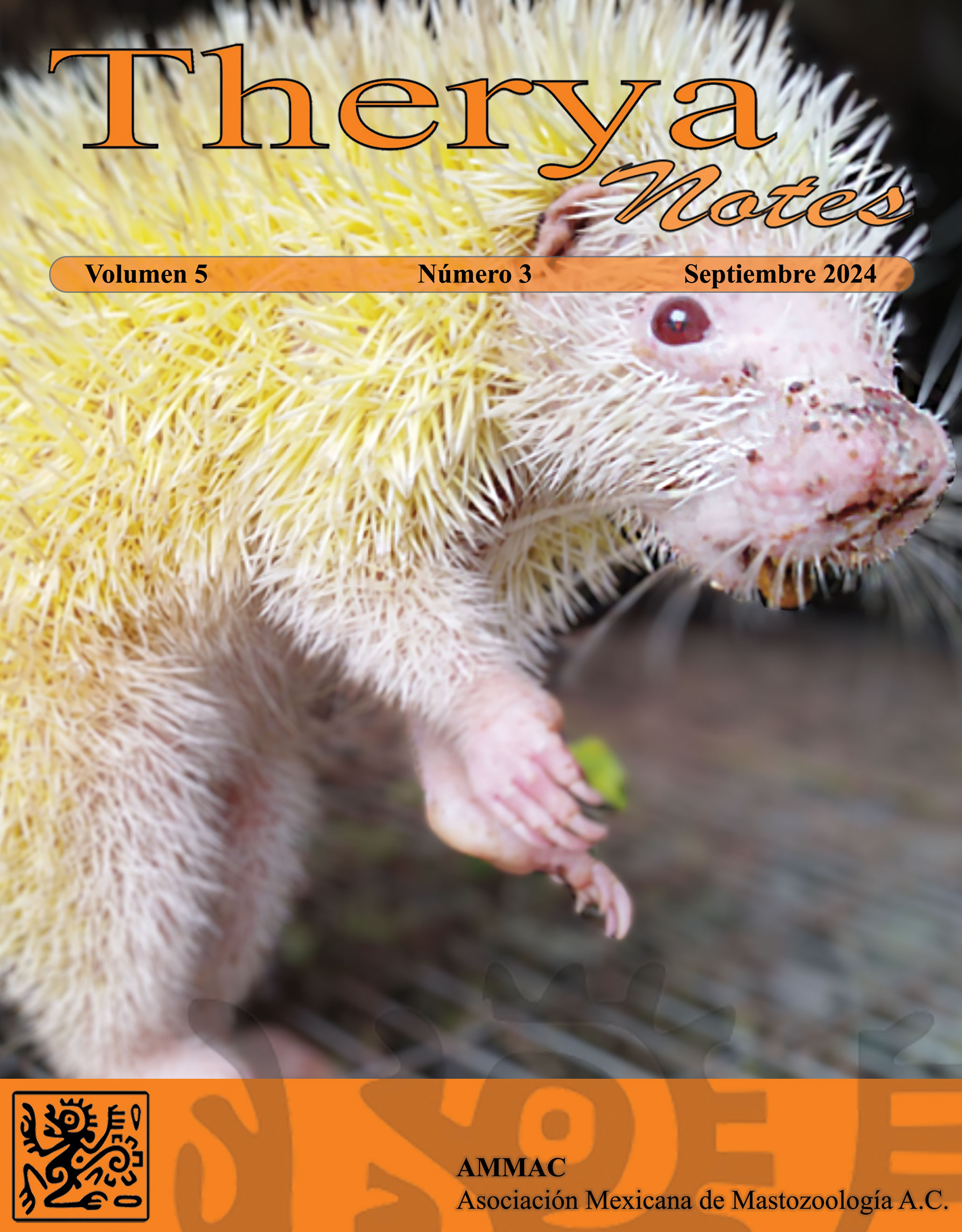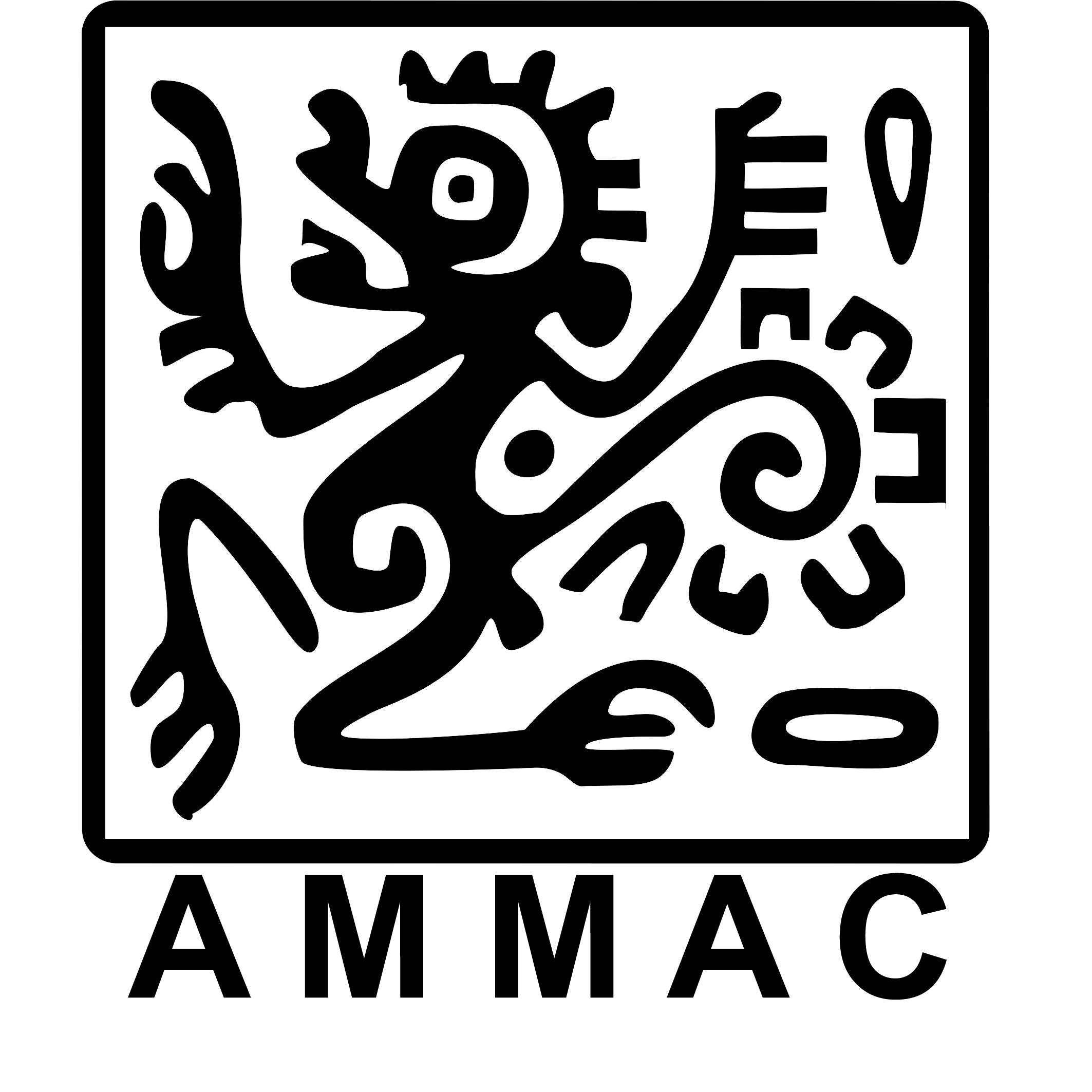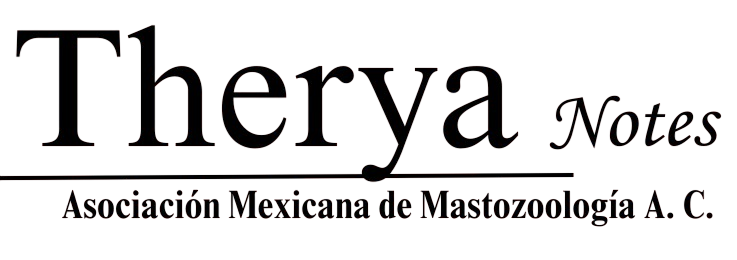Traces of coyote Canis latrans in the subalpine altitudinal gradient of Parque Nacional Chirripó, Costa Rica, and altitudinal review of the distribution area
DOI:
https://doi.org/10.12933/therya_notes-24-183Keywords:
Altitudinal distribution, Central America, coyote, feces, México, subalpine forest, Talamanca mountain rangeAbstract
The coyote is one of the American canids with the broadest geographic distribution. Although it is a common species, the upper limit of its altitudinal distribution has yet to be established. This study aims to contribute to the recording of coyote traces in a subalpine forest in the Cordillera de Talamanca, Costa Rica, and reviews its altitudinal distribution in México and Central America. We traveled 4.36 km between elevations of 3,118 to 3,821 m (the maximum altitude), to georeference and photograph coyote traces in the Parque Nacional Chirripó, Costa Rica. We asked locals and park rangers about coyote traces or sightings. In addition, we reviewed coyote reports in 2 research projects in Costa Rica and biodiversity platforms that covered México and Central America to contextualize the results. Indirect evidence was gathered of the presence of coyote in most of the walk up to the top of Cerro Chirripó. The evidence recorded at 3,821 m corresponds to a scat with length and diameter characteristic of this canid. In addition, we noted that the reports of coyotes in subalpine areas available on biodiversity platforms are scarce. The record in this study is consistent with the high dispersal capacity of this species and raises some questions about the use of resources, behavior, and altitudinal range of the coyote in Central America.
Downloads
Published
How to Cite
Issue
Section
License
THERYA NOTES is based on its open access policy allowing free download of the complete contents of the magazine in digital format. It also authorizes the author to place the article in the format published by the magazine on your personal website, or in an open access repository, distribute copies of the article published in electronic or printed format that the author deems appropriate, and reuse part or whole article in own articles or future books, giving the corresponding credits. The Creative Commons CC BY-NC-SD license is used.![]()















